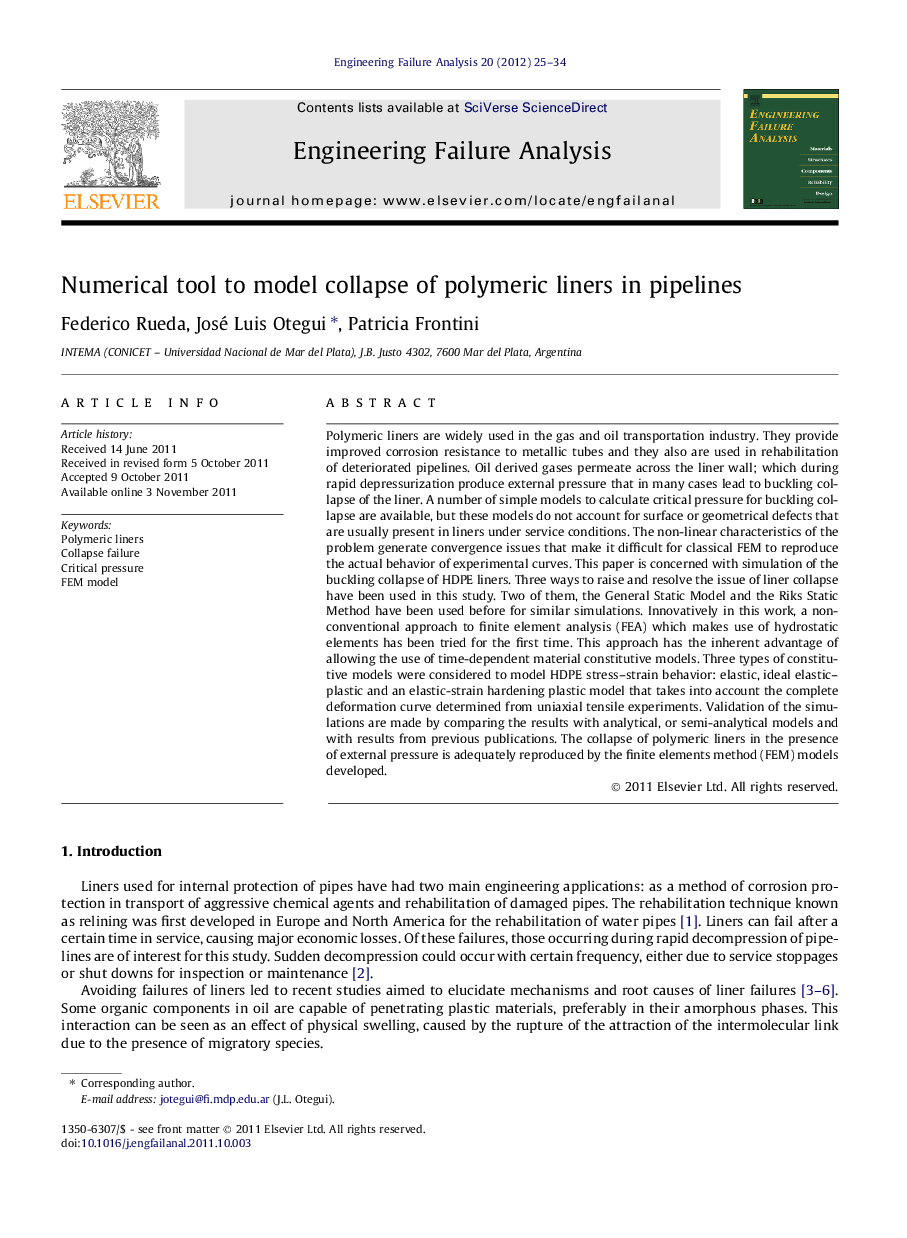| Article ID | Journal | Published Year | Pages | File Type |
|---|---|---|---|---|
| 769860 | Engineering Failure Analysis | 2012 | 10 Pages |
Polymeric liners are widely used in the gas and oil transportation industry. They provide improved corrosion resistance to metallic tubes and they also are used in rehabilitation of deteriorated pipelines. Oil derived gases permeate across the liner wall; which during rapid depressurization produce external pressure that in many cases lead to buckling collapse of the liner. A number of simple models to calculate critical pressure for buckling collapse are available, but these models do not account for surface or geometrical defects that are usually present in liners under service conditions. The non-linear characteristics of the problem generate convergence issues that make it difficult for classical FEM to reproduce the actual behavior of experimental curves. This paper is concerned with simulation of the buckling collapse of HDPE liners. Three ways to raise and resolve the issue of liner collapse have been used in this study. Two of them, the General Static Model and the Riks Static Method have been used before for similar simulations. Innovatively in this work, a non-conventional approach to finite element analysis (FEA) which makes use of hydrostatic elements has been tried for the first time. This approach has the inherent advantage of allowing the use of time-dependent material constitutive models. Three types of constitutive models were considered to model HDPE stress–strain behavior: elastic, ideal elastic–plastic and an elastic-strain hardening plastic model that takes into account the complete deformation curve determined from uniaxial tensile experiments. Validation of the simulations are made by comparing the results with analytical, or semi-analytical models and with results from previous publications. The collapse of polymeric liners in the presence of external pressure is adequately reproduced by the finite elements method (FEM) models developed.
► FEM alternatives to simulate collapse of a restrained tube under external pressure. ► Application of hydrostatic elements to simulate the action of an external fluid. ► Use of a complete HDPE traction test curve to simulate material properties. ► Contrast of FEM results with analytical models.
